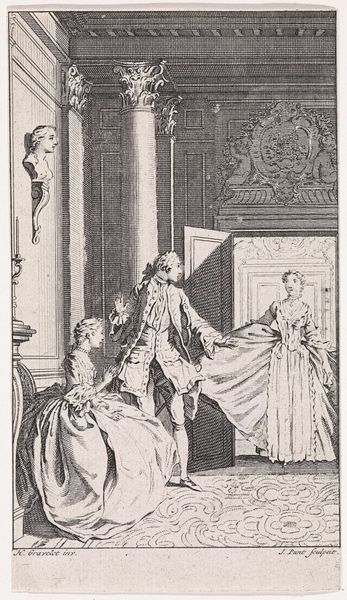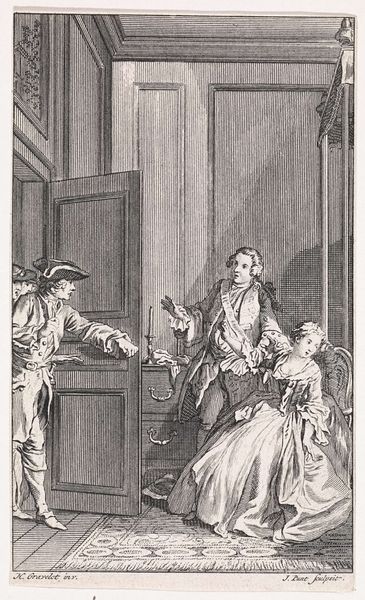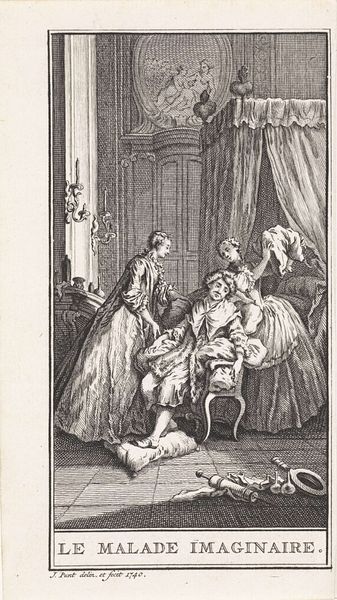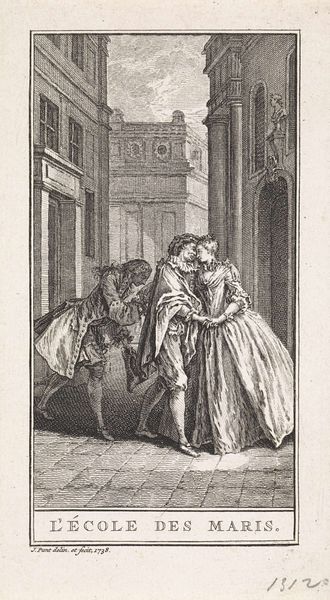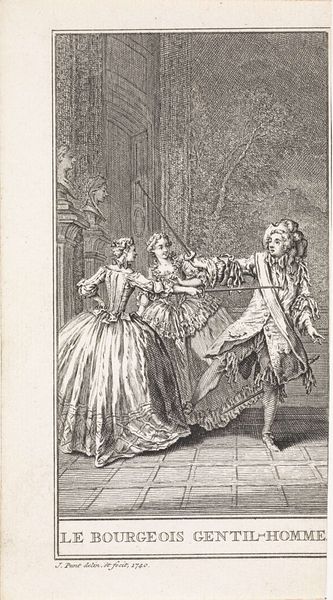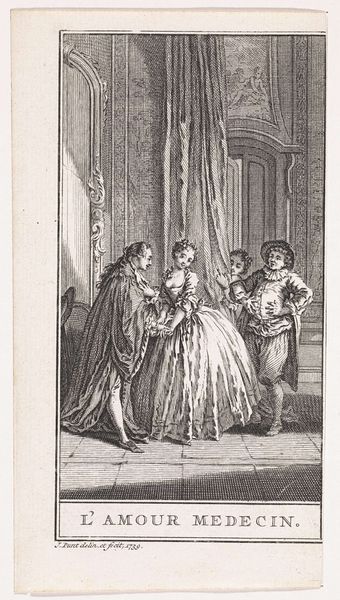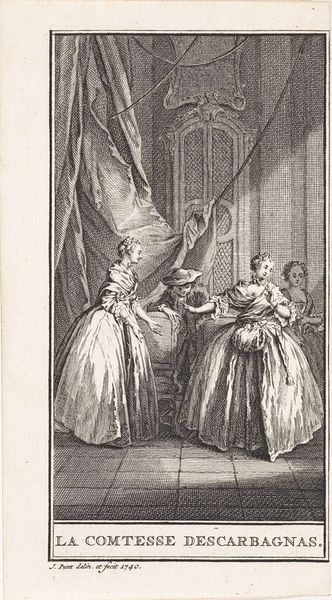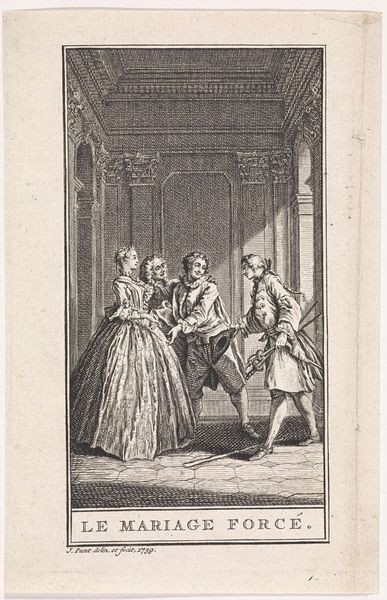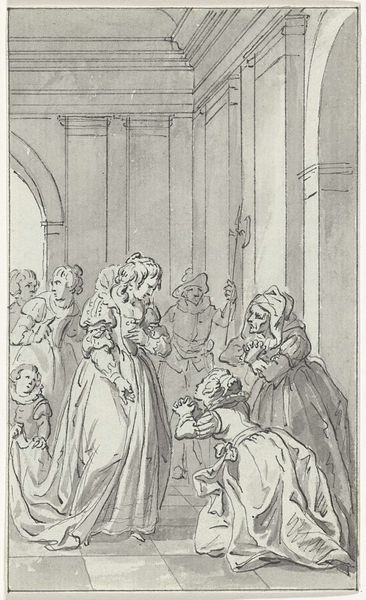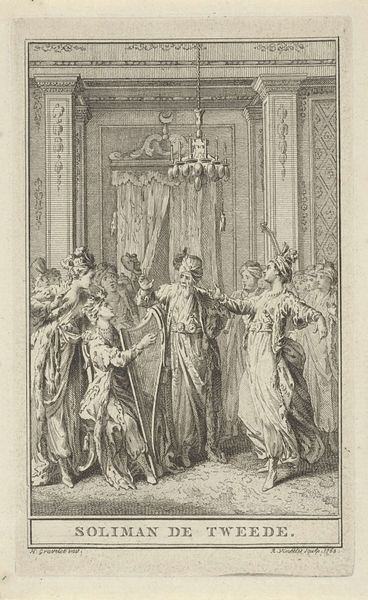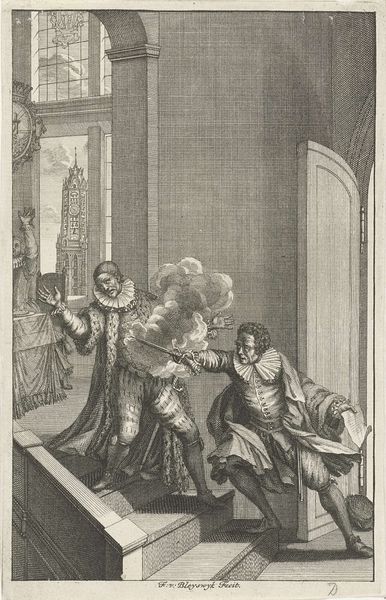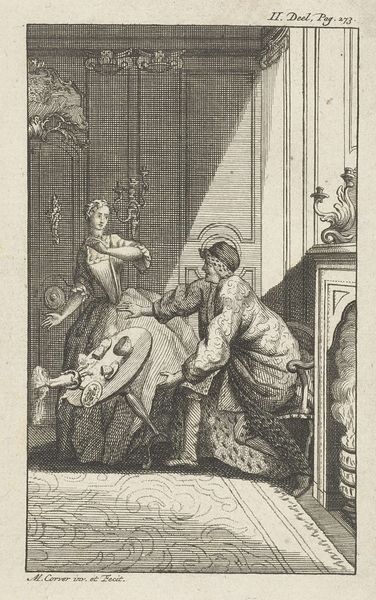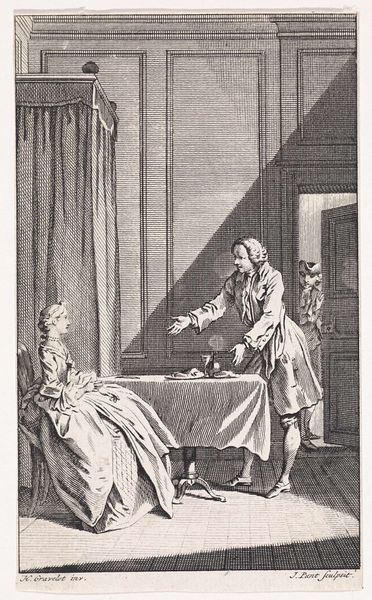
print, engraving
#
portrait
#
narrative-art
# print
#
pen illustration
#
pen sketch
#
pencil sketch
#
figuration
#
form
#
line
#
genre-painting
#
history-painting
#
academic-art
#
engraving
Dimensions: height 130 mm, width 77 mm
Copyright: Rijks Museum: Open Domain
Editor: So, this is *Thomas Jones asks for Sophia's hand*, a print made by Jan Punt in 1749, currently at the Rijksmuseum. The scene feels staged, almost theatrical, with everyone posed in these elaborate costumes. What catches your eye in terms of its cultural significance? Curator: It’s fascinating to consider how this print participates in constructing ideals of courtship and marriage within 18th-century Dutch society. Notice the detailed interior; how does that suggest status and aspiration? The man's plea for her hand and the third figure's demonstrative gesture also highlight prescribed social roles. Does the print strike you as celebratory or critical of these social norms? Editor: I see what you mean. The detail definitely emphasizes wealth, but the scene also feels a bit... rigid? Maybe it's subtly commenting on the constraints of those roles. But how widely would an image like this circulate? Would it have really influenced people's perceptions? Curator: Precisely. Prints like this, distributed among the burgeoning middle class, became key instruments in shaping social mores. The idealized setting and characters modeled aspirations, but also implicitly set boundaries. Think about the narrative itself. What stories were being told, and who had the power to tell them? Consider that. This piece might subtly reveal prevailing societal values of class and marriage. Editor: So it's not just a pretty picture, but a vehicle for reinforcing social order. I'm starting to see the image less as a snapshot of the past, and more as an active participant in it. Thanks, I now realize how such scenes actively participated in its shaping the social standards of the 18th century. Curator: Exactly! It's always more than meets the eye; artworks can be mirrors reflecting and influencing the very world they depict.
Comments
No comments
Be the first to comment and join the conversation on the ultimate creative platform.
